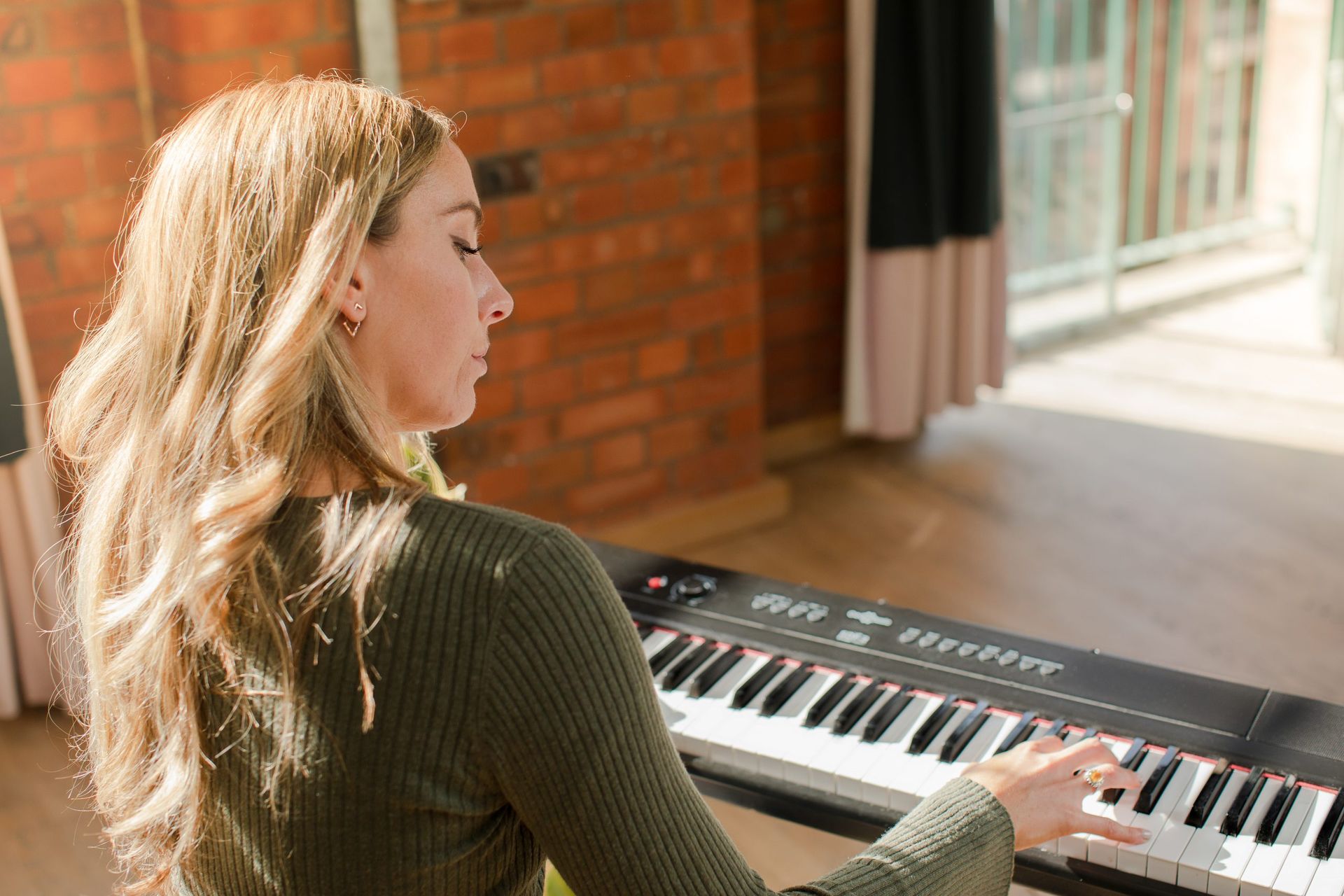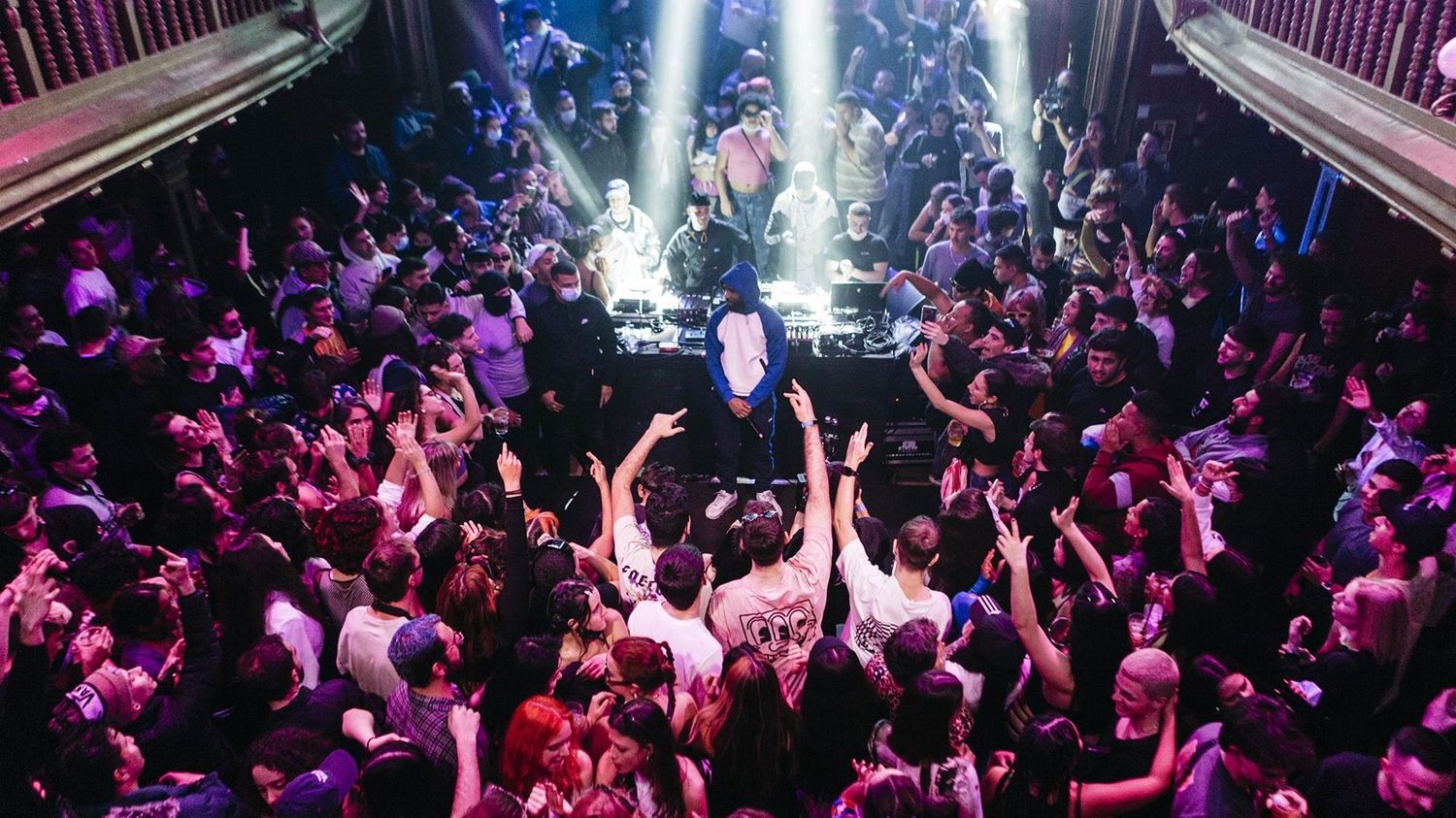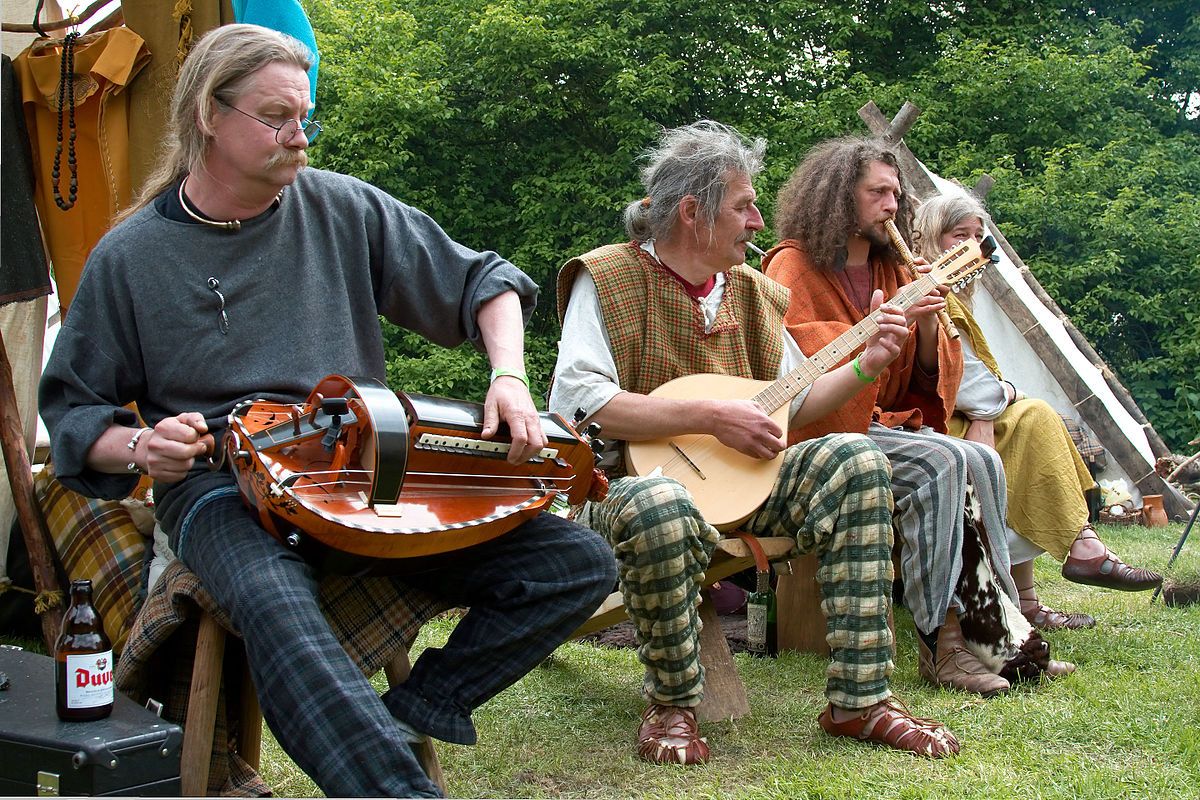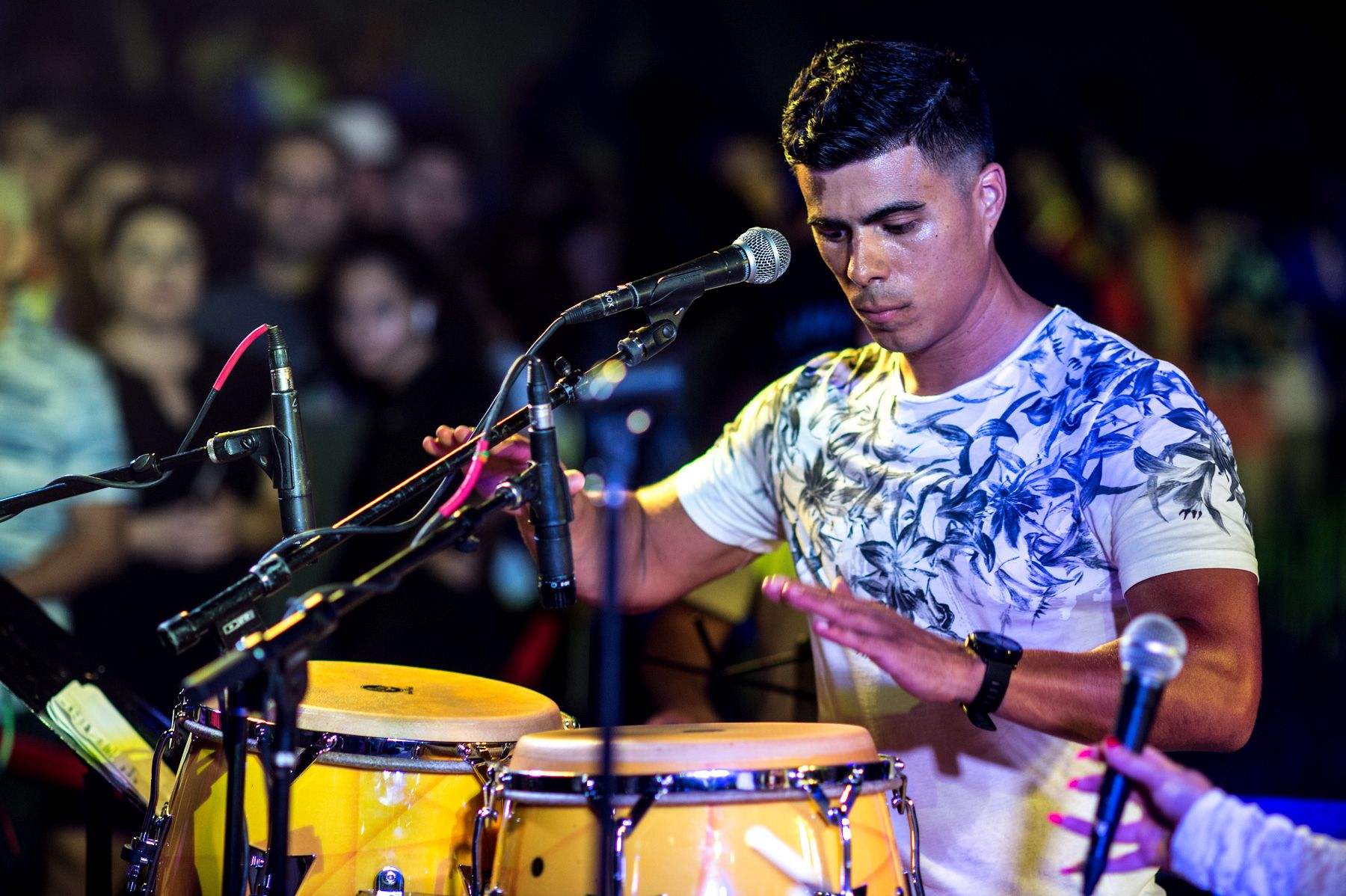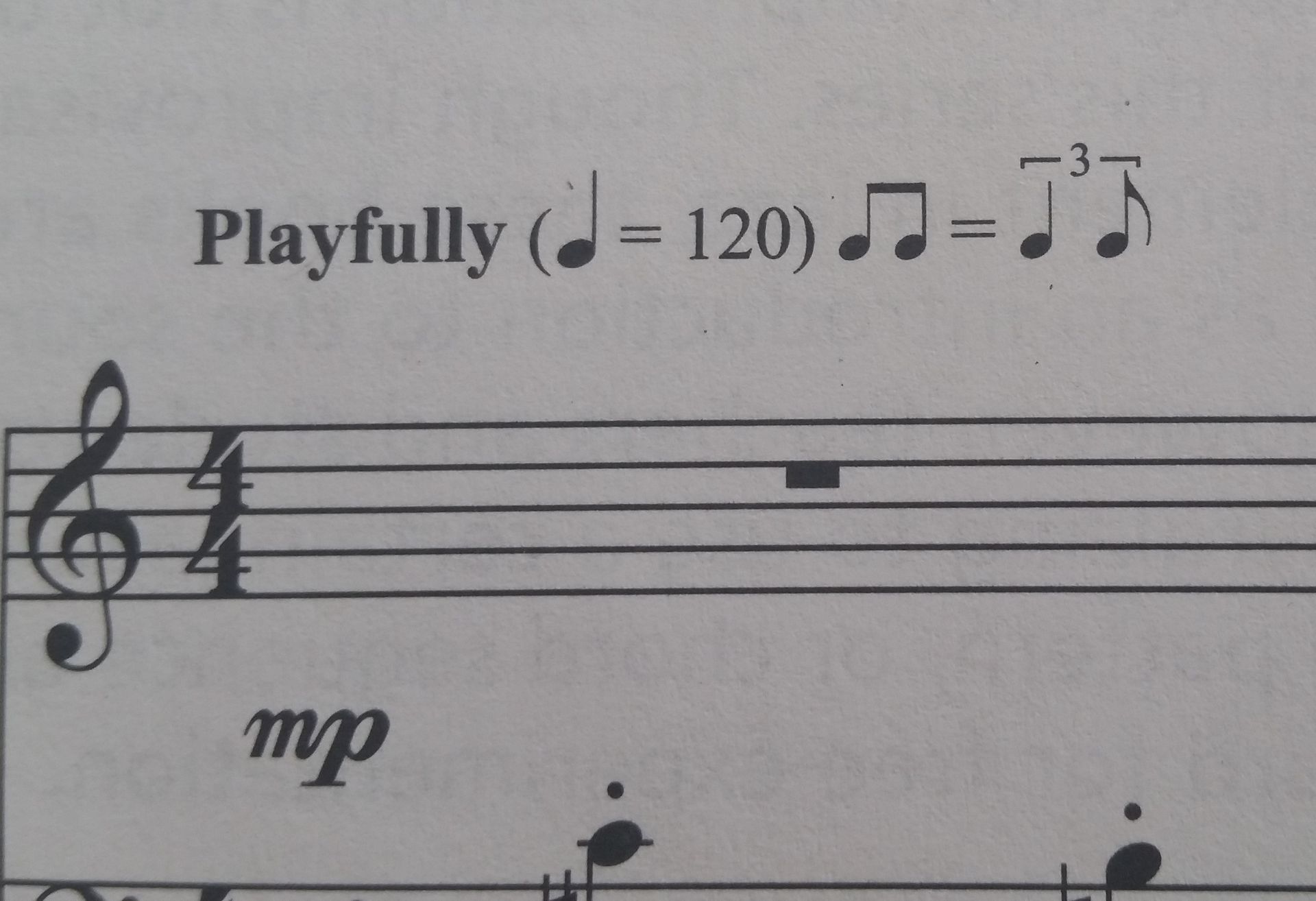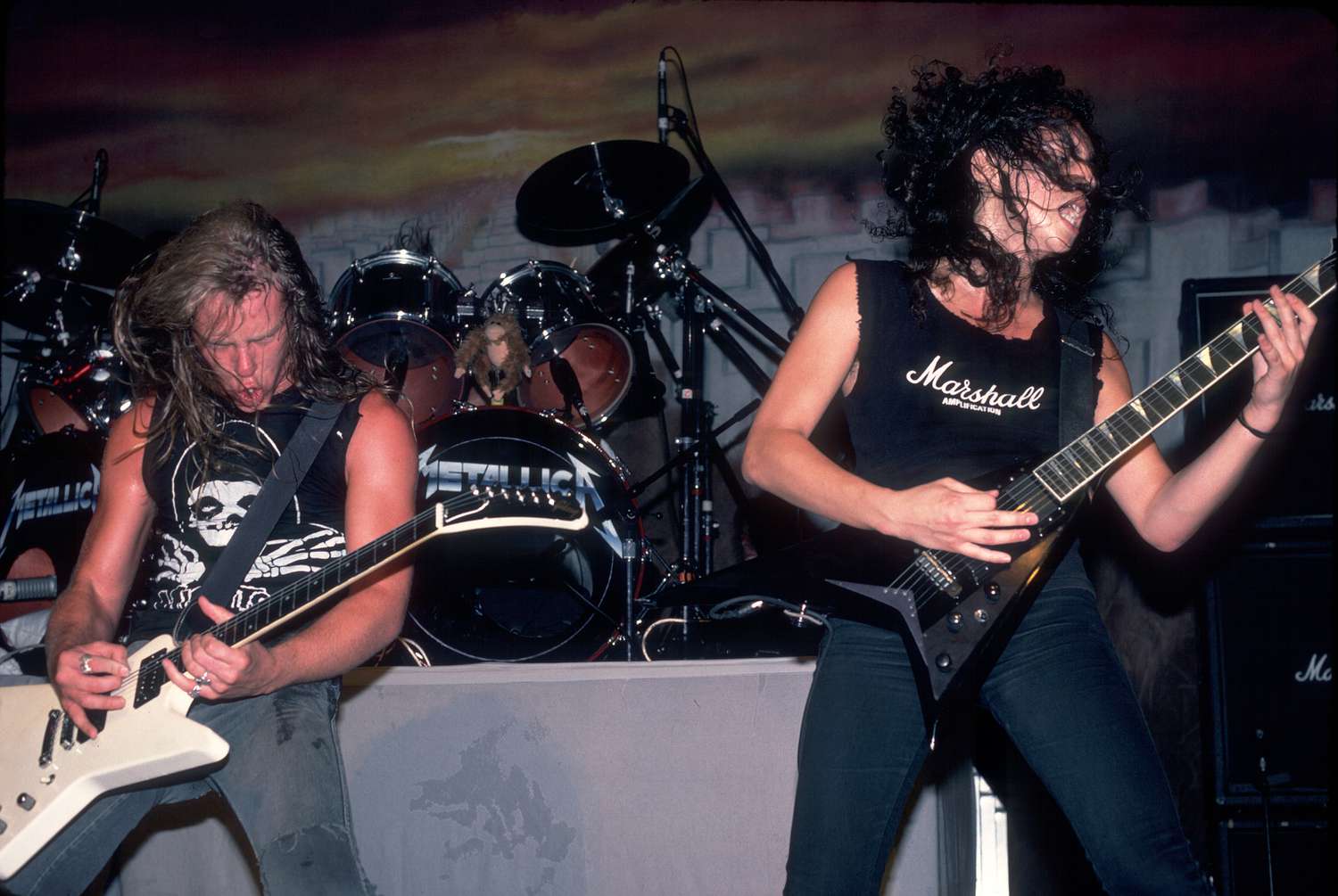Home>Production & Technology>Tempo>What Tempo Is Bounce Music
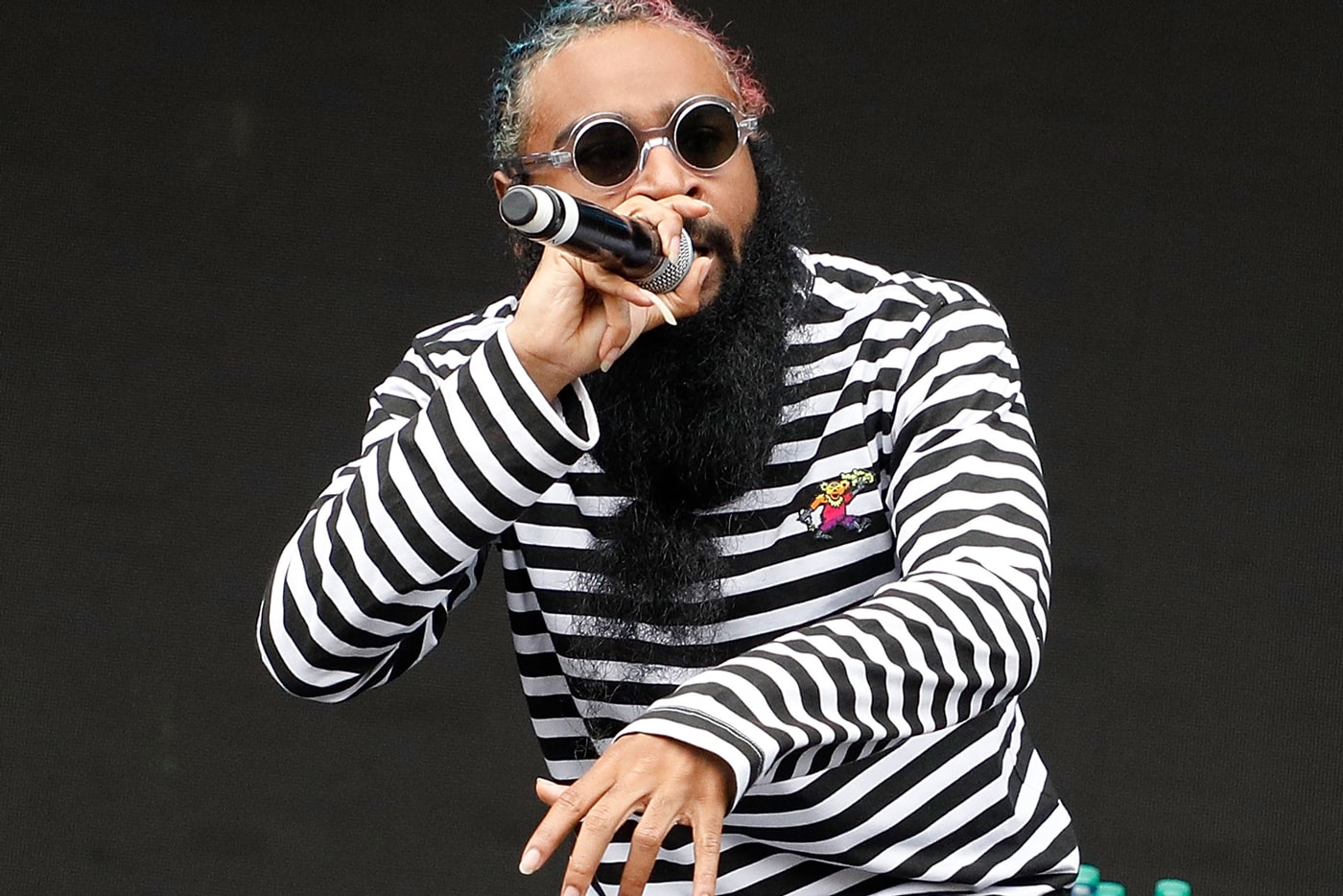

Tempo
What Tempo Is Bounce Music
Published: December 10, 2023
Learn about the tempo of bounce music and how it sets the energetic pace for this unique genre.
(Many of the links in this article redirect to a specific reviewed product. Your purchase of these products through affiliate links helps to generate commission for AudioLover.com, at no extra cost. Learn more)
Table of Contents
Introduction
Bounce music is a unique and energetic genre that exudes a vibrant and lively atmosphere. With its origins in New Orleans, this genre has gained widespread popularity for its catchy beats and infectious rhythms. Bounce music is deeply rooted in the culture and history of New Orleans, carrying the essence of the city’s vibrant music scene.
In this article, we will explore the world of bounce music, delving into its origins, characteristics, and the role of tempo in creating its unmistakable sound. Whether you are a fan of the genre or simply curious to learn more, this article will serve as a comprehensive guide to understanding the intricacies of bounce music.
As we delve into the world of bounce music, we will explore the various influences that have shaped its unique sound, including the rhythmic elements and syncopation that define this genre. We will also discuss notable artists and songs associated with bounce music, giving you a taste of the diverse talent that contributes to the genre’s vibrant and dynamic landscape.
Buckle up and get ready to dive into the world of bounce music. Whether you’re looking to expand your musical horizons or simply want to appreciate the artistry behind this genre, this article will provide you with all the insight you need to fully grasp the essence of bounce music.
What is Bounce Music?
Bounce music is a genre known for its high-energy, uptempo beats and infectious rhythms. Originating in New Orleans in the late 1980s, bounce music quickly became a staple of the city’s vibrant music scene. It is characterized by its lively and energetic nature, featuring rapid-fire vocal chants, call-and-response patterns, and heavy basslines that make it perfect for dancing.
One of the defining features of bounce music is its emphasis on the repetitive and hypnotic nature of the beats. The genre often incorporates samples from popular songs and loops them to create a driving rhythm that keeps listeners moving. This repetitive quality is what sets bounce music apart from other genres, as it encourages a continuous flow of dance and movement.
Bounce music is also known for its explicit and playful lyrics. Artists often use suggestive and provocative language, exploring themes of partying, empowerment, and sexuality. The lyrics serve as an integral part of the music, adding to the vibrant and dynamic nature of the genre.
What separates bounce music from other genres is its connection to New Orleans. The genre is deeply rooted in the city’s culture and history, reflecting the diverse influences and unique musical traditions of the region. Bounce music embodies the spirit of celebration and community that New Orleans is known for, often associated with cultural events, parades, and neighborhood block parties.
Over the years, bounce music has gained recognition beyond New Orleans and has influenced various other genres and artists. Its infectious beats and distinctive style have made it a favorite in dance clubs and music festivals worldwide.
Now that we have a general overview of what bounce music is, let’s dive deeper into its origins and the factors that have shaped its unique sound.
The Origins of Bounce Music
The roots of bounce music can be traced back to the vibrant music scene of New Orleans in the late 1980s. It emerged from a fusion of different musical styles and influences, incorporating elements of hip-hop, R&B, dance, and Mardi Gras Indian chants.
The early pioneers of bounce music, such as DJ Jubilee, DJ Jimi, and Mannie Fresh, played a crucial role in shaping the genre and introducing its distinctive sound to the world. These artists blended the uptempo beats of hip-hop with the soulful sounds of New Orleans, resulting in the birth of bounce music.
The birth of bounce music can also be attributed to the rise of block parties and neighborhood gatherings in New Orleans. These social gatherings served as a platform for local artists and DJs to showcase their talent and connect with the community. Bounce music quickly became the soundtrack of these vibrant gatherings, providing a high-energy and infectious atmosphere that brought people together.
In addition to its musical influences, bounce music is deeply intertwined with the cultural and social fabric of New Orleans. The genre emerged from the vibrant and diverse neighborhoods of the city, where cultural celebrations, such as Mardi Gras and second-line parades, played a significant role in shaping the musical landscape.
The rhythmic elements of bounce music can be traced back to the traditions of Mardi Gras Indian chants and second-line parades. Bounce music incorporates the syncopated rhythms and call-and-response patterns that are intrinsic to these cultural events, creating a unique sound that captures the essence of New Orleans.
Furthermore, the DJ culture in New Orleans played a significant role in the development of bounce music. DJs were the tastemakers and trendsetters, introducing new beats and samples that became the foundation of the genre. They created a party atmosphere and kept the crowds moving with their skillful mixing and scratching.
As bounce music gained traction in New Orleans, it started to spread beyond the city’s borders. Artists like Big Freedia, 5th Ward Weebie, and Sissy Nobby brought the genre to national attention, further expanding its influence and popularity.
Now that we understand the origins of bounce music, let’s explore the characteristics that define this energetic genre.
Characteristics of Bounce Music
Bounce music is characterized by a unique set of features that differentiate it from other genres. These characteristics combine to create the energetic and infectious nature that defines bounce music.
The tempo of bounce music is one of its defining features. It typically ranges from 90 to 110 beats per minute, creating a fast-paced and high-energy feel. This tempo is perfect for dance and movement, encouraging listeners to let loose and showcase their best moves on the dance floor.
In addition to its upbeat tempo, bounce music is known for its heavy basslines and prominent percussion. The basslines provide a deep and powerful foundation, while the percussion adds an extra layer of rhythm and groove. These elements work together to create the driving and pulsating beats that are characteristic of bounce music.
Bounce music also incorporates repetitive and hypnotic vocal chants and call-and-response patterns. Artists often deliver their lyrics in a rapid-fire manner, contributing to the energetic and lively atmosphere. The repetitive nature of the vocal chants and call-and-response patterns allows for easy audience participation and creates a sense of unity within the crowd.
Another key characteristic of bounce music is its use of samples from popular songs and other genres. These samples are often looped and manipulated to create a unique and recognizable sound. The use of samples provides a sense of familiarity for listeners while adding a fresh twist to the music.
Lyrically, bounce music explores a range of themes including partying, empowerment, and sexuality. The lyrics are often explicit, playful, and filled with double entendres. They serve as a form of self-expression and contribute to the vibrant and festive atmosphere of bounce music.
Furthermore, bounce music is deeply rooted in the culture of New Orleans. It carries the spirit of celebration and community that the city is known for, often associated with cultural events, neighborhood block parties, and parades. This connection to the local culture contributes to the authenticity and richness of the genre.
With its unique tempo, energetic beats, repetitive vocal chants, and cultural influences, bounce music offers a one-of-a-kind listening experience. Now that we have explored the characteristics that define bounce music, let’s delve into the various influences that have shaped this genre over the years.
Influences on Bounce Music
Bounce music is a genre that has been influenced by a diverse range of musical styles and cultural traditions. Its unique sound can be attributed to a combination of these influences, each contributing to the dynamic and energetic nature of the genre.
One of the primary influences on bounce music is hip-hop. In the late 1980s and early 1990s, hip-hop was experiencing a surge in popularity, and its uptempo beats and rhythmic delivery played a significant role in shaping the sound of bounce music. Bounce artists incorporated the heavy basslines, playful lyrics, and vocal delivery techniques of hip-hop into their music, adding a fresh and vibrant twist to the genre.
Another influential genre on bounce music is R&B. The soulful melodies, harmonies, and smooth vocal delivery found in R&B music have made their way into bounce music. This fusion results in a distinct blend of the rhythmic and groove-based elements of bounce music with the melodic and emotional qualities of R&B.
It is impossible to discuss the influences on bounce music without acknowledging the cultural traditions of New Orleans. Mardi Gras Indian chants and second-line parades have greatly influenced the rhythmic patterns, call-and-response structures, and syncopation found in bounce music. These cultural traditions are deeply ingrained in the DNA of New Orleans and have played a significant role in shaping the musical landscape of the city.
Bounce music also draws inspiration from various dance and electronic music genres. The energetic and pulsating beats found in genres such as techno, house, and dancehall have made their way into bounce music, adding an extra layer of intensity and movement to the genre.
Additionally, the DJ culture of New Orleans has had a profound influence on bounce music. DJs are seen as tastemakers and trendsetters, introducing new beats, samples, and mixing techniques that have become integral to the genre. The skillful mixing and scratching techniques employed by DJs have become synonymous with bounce music, creating seamless transitions and keeping the energy high.
Finally, the local culture and streetlife of New Orleans itself have influenced the lyrical content and themes found in bounce music. From the vibrant nightlife to the lively neighborhood block parties, bounce music reflects the spirit of celebration, community, and resilience that defines the city of New Orleans.
With its diverse range of influences, bounce music is a genre that constantly evolves and adapts while staying true to its roots. The next section will explore the role of tempo in bounce music and how it contributes to the unique sound of the genre.
Tempo in Bounce Music
Tempo plays a crucial role in defining the sound and energy of bounce music. It is the driving force behind the genre’s high-energy and infectious nature.
Bounce music is typically characterized by a fast-paced tempo ranging from 90 to 110 beats per minute (BPM). This relatively high tempo creates a sense of urgency and excitement, setting the stage for intense dance moves and energetic performances.
The fast tempo of bounce music is rooted in the New Orleans party scene, where DJs would mix and blend tracks to keep the energy high and the crowd moving. This vibrant club culture and live performances heavily influenced the tempo of bounce music, shaping it into a genre that encourages constant movement and engagement.
The uptempo nature of bounce music is well-suited for dancing and partying. It creates a pulsating rhythm that drives the energy of the crowd and sets the tone for a lively and festive atmosphere. The fast tempo also allows for quick footwork and energetic dance moves that are synonymous with bounce music.
In addition to the fast tempo, bounce music often incorporates syncopated rhythms and intricate drum patterns. This rhythmic complexity, combined with the rapid-fire vocal delivery, adds to the dynamic and lively nature of the genre. The interplay between the beats, vocal chants, and call-and-response patterns creates a unique and engaging listening experience.
The tempo of bounce music also fuels its place in the world of remixes and mashups. With its high BPM, bounce music lends itself well to being mixed with other genres or used as a sample in various musical contexts. Its fast-paced nature provides a solid foundation for DJs and producers to experiment with different sounds and create unique combinations of music.
While the fast tempo is a defining characteristic of bounce music, it is essential to note that the genre also encompasses variations in tempo. Bounce tracks can range from slightly slower grooves to even higher BPMs, adding depth and diversity to the genre’s sonic palette.
In summary, the tempo of bounce music sets the stage for its high-energy and infectious nature. With its fast-paced beats and syncopated rhythms, bounce music creates an atmosphere that is perfect for dancing, partying, and embracing the vibrant spirit of New Orleans. The next section will explore the syncopation and rhythmic elements that add to the distinct sound of bounce music.
Syncopation and Rhythmic Elements in Bounce Music
Syncopation and rhythmic elements are fundamental components of bounce music that contribute to its unique and infectious sound. Bounce music is renowned for its complex rhythmic patterns, syncopated beats, and intricate percussion.
One of the key features of bounce music is its mastery of syncopation. Syncopation refers to the deliberate shifting of accents or emphasis from the expected or predictable beats in a musical piece. In bounce music, syncopation creates a sense of tension and surprise, as the rhythmic patterns challenge the listener’s musical expectations. It is this unexpected and offbeat quality that adds excitement and energy to the genre.
The syncopated beats in bounce music are achieved through the skillful manipulation of drum patterns and percussion. The use of snare drums, hi-hats, and other percussion instruments is integral to creating the intricate and dynamic rhythms found in bounce music. These rhythmic elements combine to form a complex and layered texture that drives the energy and groove of the genre.
The syncopation in bounce music extends beyond just the drum patterns. It is also reflected in the vocal delivery and chant-like style of the lyrics. Artists often employ rapid-fire vocal chants, call-and-response patterns, and repetitive hooks that are syncopated with the underlying beat. This rhythmic interplay between the vocals and the music adds to the dynamic and interactive nature of bounce music.
Bounce music also incorporates elements of New Orleans’ cultural traditions, such as Mardi Gras Indian chants and second-line parades. These traditions contribute to the rhythmic complexity and syncopation found in bounce music. The call-and-response patterns and the syncopated rhythms of these cultural practices have been seamlessly integrated into the fabric of bounce music, adding depth and richness to its sound.
Furthermore, the use of repetition is another key rhythmic element in bounce music. Repetitive vocal chants, loops, and melodic fragments are frequently used to create a hypnotic and infectious quality in the music. This repetition contributes to the genre’s drive and serves as a unifying force, allowing the audience to participate and engage with the music.
The combination of syncopation, intricate percussion, and rhythmic elements in bounce music creates a lively and dynamic sound that embraces the spirit of celebration and dance. It is these rhythmic intricacies that make bounce music an irresistible genre with a distinct identity.
Now that we have explored the syncopation and rhythmic elements in bounce music, let’s take a closer look at some notable artists and songs in the genre.
Notable Artists and Songs in Bounce Music
Bounce music has paved the way for numerous talented artists who have made significant contributions to the genre’s growth and popularity. These artists have captivated audiences with their infectious beats, energetic performances, and unique styles. Here are some notable artists and songs in the world of bounce music:
- Big Freedia: Often referred to as the “Queen of Bounce,” Big Freedia is a prominent figure in the bounce music scene. Their energetic performances and charismatic stage presence have garnered widespread recognition. Hits like “Excuse” and “Azz Everywhere” have become anthems of the genre, showcasing Big Freedia’s ability to merge bounce music with catchy hooks and powerful lyrics.
- DJ Jubilee: Considered one of the pioneers of bounce music, DJ Jubilee has been instrumental in shaping the genre’s sound. Songs like “Get It Ready, Ready” and “Back That Thang Up” have become iconic in the bounce music scene, with their catchy beats and party-starting vibes.
- Mannie Fresh: Known for his production prowess, Mannie Fresh has left an indelible mark on bounce music. His collaborations with Cash Money Records and his work as a producer for artists like Juvenile and Lil Wayne have made him a household name. Songs like “Bling Bling” and “Go DJ” showcase Mannie Fresh’s ability to create infectious bounce beats that resonate with listeners.
- Sissy Nobby: With their unique vocal style and distinct energy, Sissy Nobby has become a significant force in the bounce music scene. Songs like “Lay Me Down” and “Consequences” demonstrate their ability to infuse bounce music with a raw and authentic edge.
- Big Choo: Known for his high-energy performances and powerful stage presence, Big Choo is a dynamic figure in the bounce music world. Songs like “Watch My Footwork” and “Pump It Up” have become crowd favorites, showcasing his mastery of the genre’s rhythmic elements and infectious beats.
These are just a few of the many artists who have made their mark in the world of bounce music. Their creative contributions and relentless energy have helped propel the genre to new heights.
It is important to note that the influence of bounce music extends beyond individual artists. The genre has also been embraced by mainstream music, with artists like Drake, Beyoncé, and Nicki Minaj incorporating bounce-inspired elements into their songs. This crossover success has further solidified bounce music’s place in popular culture.
Whether you’re a die-hard fan or new to the genre, exploring the works of these notable artists and diving into the infectious rhythms of their songs is sure to make you appreciate the vibrant and dynamic world of bounce music.
With a rich history and a growing roster of talented artists, bounce music continues to evolve and captivate audiences around the globe. As we conclude our exploration of bounce music, it’s clear that this genre is here to stay, making an indelible impact on the music industry and the world of dance.
Conclusion
Bounce music is a genre that exudes energy, vibrant rhythms, and a unique cultural essence. With its roots in New Orleans and a fusion of various musical styles, bounce music has gained global recognition for its infectious beats, high tempo, and distinct characteristics.
Throughout this article, we have explored the origins of bounce music, delving into its connection to New Orleans’ rich musical traditions and the contributions of early pioneers. We’ve also discussed the genre’s defining characteristics, including its high-energy tempo, heavy basslines, and playful lyrics.
Influences from hip-hop, R&B, electronic music, and the cultural traditions of New Orleans have all shaped the sound and evolution of bounce music. The infusion of syncopation, intricate rhythms, and repetitive vocal chants make this genre a captivating listening experience that transcends boundaries.
Notable artists such as Big Freedia, DJ Jubilee, Mannie Fresh, Sissy Nobby, and Big Choo have elevated bounce music to new heights with their infectious hits and dynamic performances. Their contributions, along with the crossover success of bounce music into mainstream culture, have solidified its place as a genre that continues to captivate and inspire.
As we conclude our exploration of bounce music, it becomes evident that this genre represents more than just music. It embodies a spirit of celebration, resilience, and community that is deeply rooted in the culture of New Orleans. Bounce music has the power to bring people together, create memorable experiences, and ignite energetic movement.
Whether you’re a fervent fan or new to the genre, embracing the world of bounce music opens doors to an exhilarating and unique musical journey. So, turn up the volume, let the beats guide your feet, and immerse yourself in the infectious rhythms of bounce music.
Now it’s time for you to experience the magic of bounce music firsthand. So put on your dancing shoes, turn up the volume, and let the vibrant and energetic sounds of bounce music fill your world.


